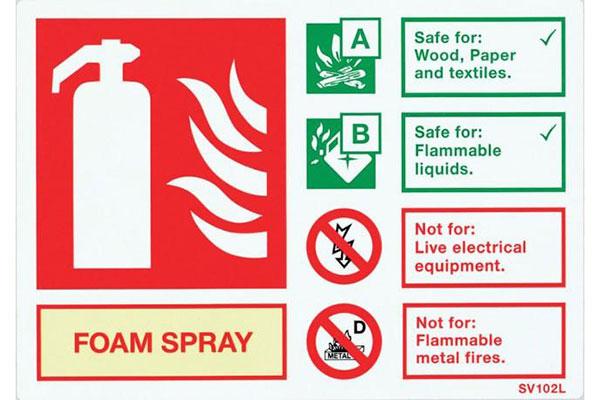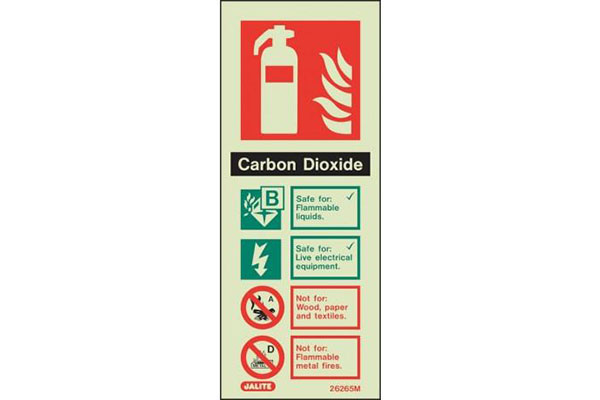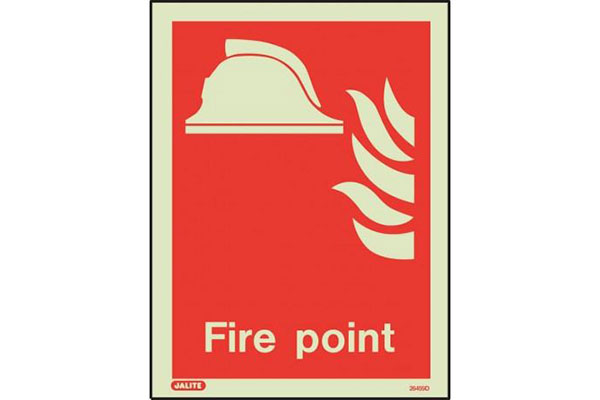How fire warning signs can help enforce your fire safety policy

Fire warning signs are a key part of a business’ health and safety requirements and legal responsibilities. No matter the type of business or environment, you need to provide clear, unambiguous information for staff, visitors and customers to allow them to respond quickly and safely in the event of an emergency, as well as advising them on how to behave in order to minimise the risks.
There are various fire safety signs on the market, so it can be tricky to get a clear picture of what you need, both legally and from a safety perspective. Here, First Mats Ltd give their overview on the different types of signs, best practice for using them, and your legal obligations.
The different types
Fire safety signs can be broadly split into four main categories: prohibition signs, warning signs, mandatory signs and equipment/exit signs. Prohibition signs are used to show that a behaviour or activity is not permitted. These include the commonly seen ‘No Smoking’ sign, as well as ‘No Unauthorised Personnel’ and ‘No Naked Flames’. Warning signs indicate that there’s a particular risk or hazard present – for example, a high voltage area or a flammable liquid store. Mandatory signs give instructions to ensure that risks are minimised. These include signs like ‘Fire Door Keep Shut’ and ‘Fire Door Keep Clear’. Equipment and exit signage is used to show the quickest way out of a building, as well as the location of, and route to, first aid equipment, alarm call points and extinguishers.

These categories are usually further broken down with colours
• Red indicates prohibited activities;
• Yellow advises caution;
• Green denotes positive actions;
• Blue shows mandatory information.
Shapes are also used to immediately convey meaning
• A circle with a diagonal bar indicates that something is forbidden;
• Triangles are used for warnings;
• A green square/rectangle is used for safety information;
• A red square/rectangle is used for fire-specific safety information.
Placement
Signs should be placed frequently and visibly. If a visitor is wandering around any part of your site, they should never be too far from a sign pointing them towards the nearest emergency exit, alarm and/or extinguisher, ensuring that any junctions or changes of direction are clearly marked.
Don’t put your sign in an obscure place, such as behind a piece of machinery. Instead, make sure they are clearly and easily visible – not too high; not too low – and ideally can be read in low or no light environments – dark corridors, during power cuts, etc. – so look for luminous signs or models with independent emergency lighting.
Emergency and safety signs should be kept separate from other signs and notices. Placing them on a notice board that’s full of other posters, pictures and information, can cause them to be significantly harder to see. As a guide, signs placed on walls should be 1.7m from the floor so that they are both conspicuous and easy to read.
You’ll also want to ensure that your signs are of a good quality. Those that fade, curl or fall down are going to need replacing to ensure that they are still both useful and compliant with the law.
Conducting regular maintenance is also important to ensure that the sign is both clean and legible. Lastly, make sure that any changes to the site, whether temporary or permanent, are reflected in your use of signs – arrows pointing to a door that’s jammed or blocked could prove to be disastrous.

Legal responsibilities
The laws regarding fire safety are far ranging and can seem quite daunting. At the core of them all, however, is good health and safety practice – both in terms of reducing the likelihood of a fire and how to deal with one if it breaks out.
• Evacuation routes must be readily available to anyone on site, and must be easy to understand.
• Fire response equipment like alarms and extinguishers must be easy to find, access and use.
• First aid equipment must be similarly easy to find, access and use.
• Fire safety instructions also have to be displayed and understood by anyone on site.
• Behavioural signs like ‘Fire Door Keep Shut’ must be used to reduce risks and possible escalations in the event of an emergency.
The key law to be familiar with is the Regulatory Reform (Fire Safety) Order, 2005, which is available on the UK Government website. Non-compliance can result in criminal proceedings against directors, safety managers and proprietors. Punishments include fines and up to two years’ imprisonment. In the event of a fatality, charges can include manslaughter or murder. No Smoking signs are mandated under the Health Act 2006 Part 1 and Smoke Free Signs Regulation 2012.
Regulations covering the quality, design and content of the signs themselves are now grouped under BS ISO EN 7010:2011 – graphical symbols, safety colours, safety signs and registered safety signs. This regulation supersedes and incorporates the previous standard BS 5499, which relates to safety signage. Make sure that you’ve reviewed these general laws as well as any site, location, industry or equipment-related specific laws before you conduct your fire safety review. For more information on First Mats Ltd, see www.firstmats.co.uk.
- Log in or register to post comments








